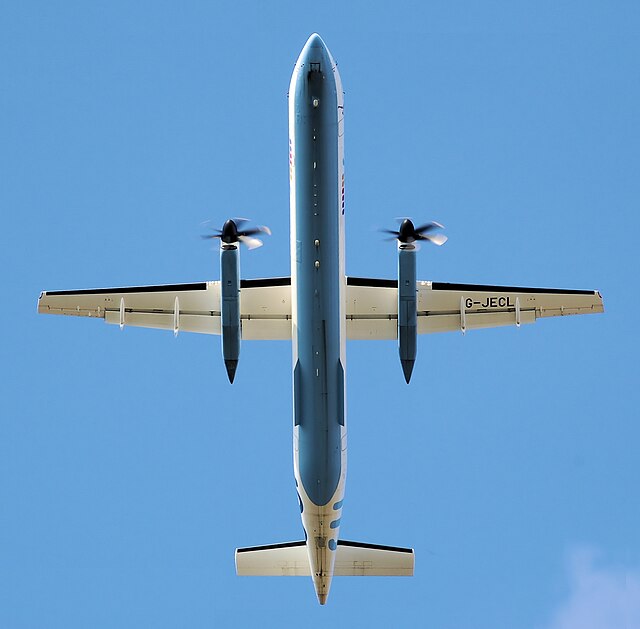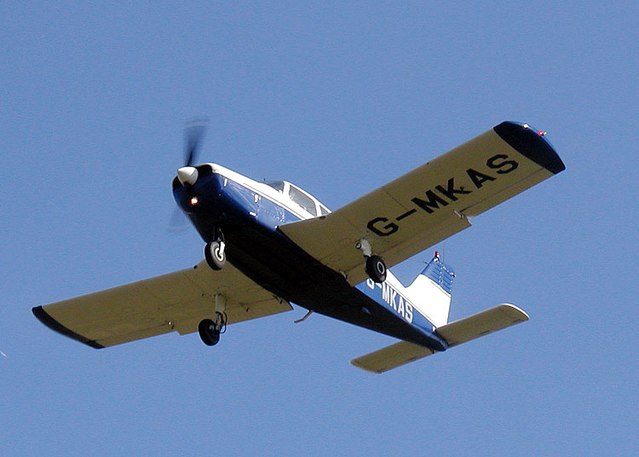Aspect ratio (aeronautics)
In aeronautics, the aspect ratio of a wing is the ratio of its span to its mean chord. It is equal to the square of the wingspan divided by the wing area. Thus, a long, narrow wing has a high aspect ratio, whereas a short, wide wing has a low aspect ratio.
An ASH 31 glider with very high aspect ratio (AR=33.5) and lift-to-drag ratio (L/D=56)
Extremely high aspect ratio wing (AR=51.33) of the Eta motor glider providing a L/D ratio of 70
High aspect ratio wing (AR=12.8) of the Bombardier Dash 8 Q400
Moderate aspect ratio wing (AR=5.6) of a Piper PA-28 Cherokee
The wingspan of a bird or an airplane is the distance from one wingtip to the opposite wingtip. For example, the Boeing 777–200 has a wingspan of 60.93 metres, and a wandering albatross caught in 1965 had a wingspan of 3.63 metres, the official record for a living bird.
The term wingspan, more technically extent, is also used for other winged animals such as pterosaurs, bats, insects, etc., and other aircraft such as ornithopters.
In humans, the term wingspan also refers to the arm span, which is the distance between the length from the end of an individual's arm to the individual's fingertips on the other arm when raised parallel to the ground at shoulder height.
The distance A to B is the wingspan of this Boeing 777-200ER





